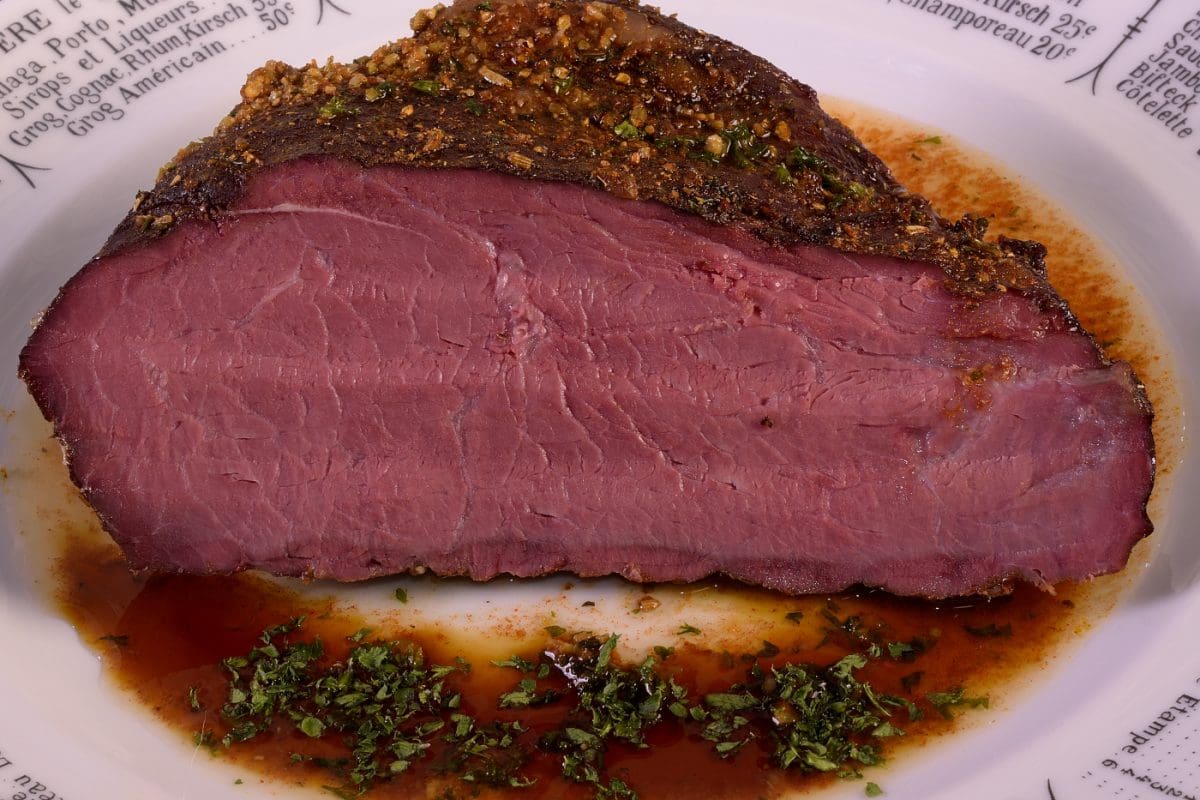
Above: Lipavi C10 container, N10 polycarbonate racks. Lipavi C10L-UNIR lid.
Actual prep time: 1 hour
Level of difficulty: 2.25
Serves 4+
Procedure:
The top sirloin flap/coulotte roast is occasionally available in big box stores and may appear in the butcher’s case in the form of a steak. Purchasing an entire top sirloin and removing the roast yourself offers considerable savings. The remainder of the top sirloin is an excellent source of steaks and roasts. Click HERE for a detailed explanation of how to separate this robustly flavored cut from the primal before you ask your butcher to do it for you..

Preheat the sous vide bath to 129 F/54 C.
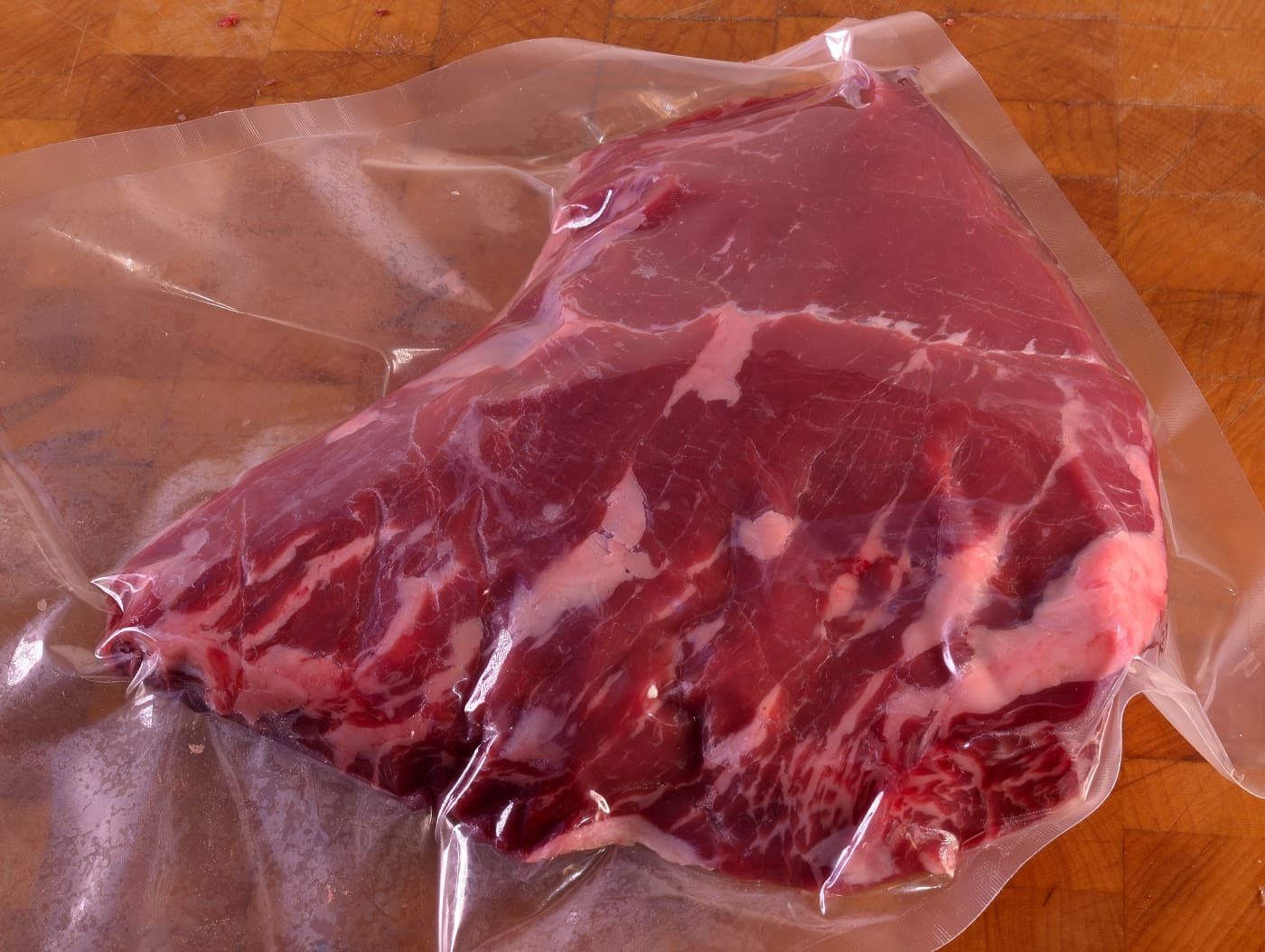
Vacuum seal the roast in a heat rated pouch and load into a suitable rack. We used a Lipavi N10 polycarbonate. Submerge into the bath. Process at 129 F/54 C for 6-8 hours or “until it’s tender.” Tenderness is subjective and a clock cannot accurately measure it. The interval required to achieve desirable results may even vary from one package to another in the butcher’s case. This 45 day Umai aged coulotte roast was tender after only 6 hours, but aging is not necessary to achieve an excellent outcome.
Exploring the options
Once the desired level of tenderness has been achieved, remove the bag from the bath and submerge in iced tap water until the package achieves 70 F/21 C. Refrigerate at 40 F/4 C until you are ready to proceed to the next step. The chilled roast can be smoked/roasted on the same day or can be refrigerated up to 2 weeks without sacrificing quality.
Day of service
Submerge the package in hot tap water (110 F/43 C) or a working sous vide bath to melt the gel in the package.
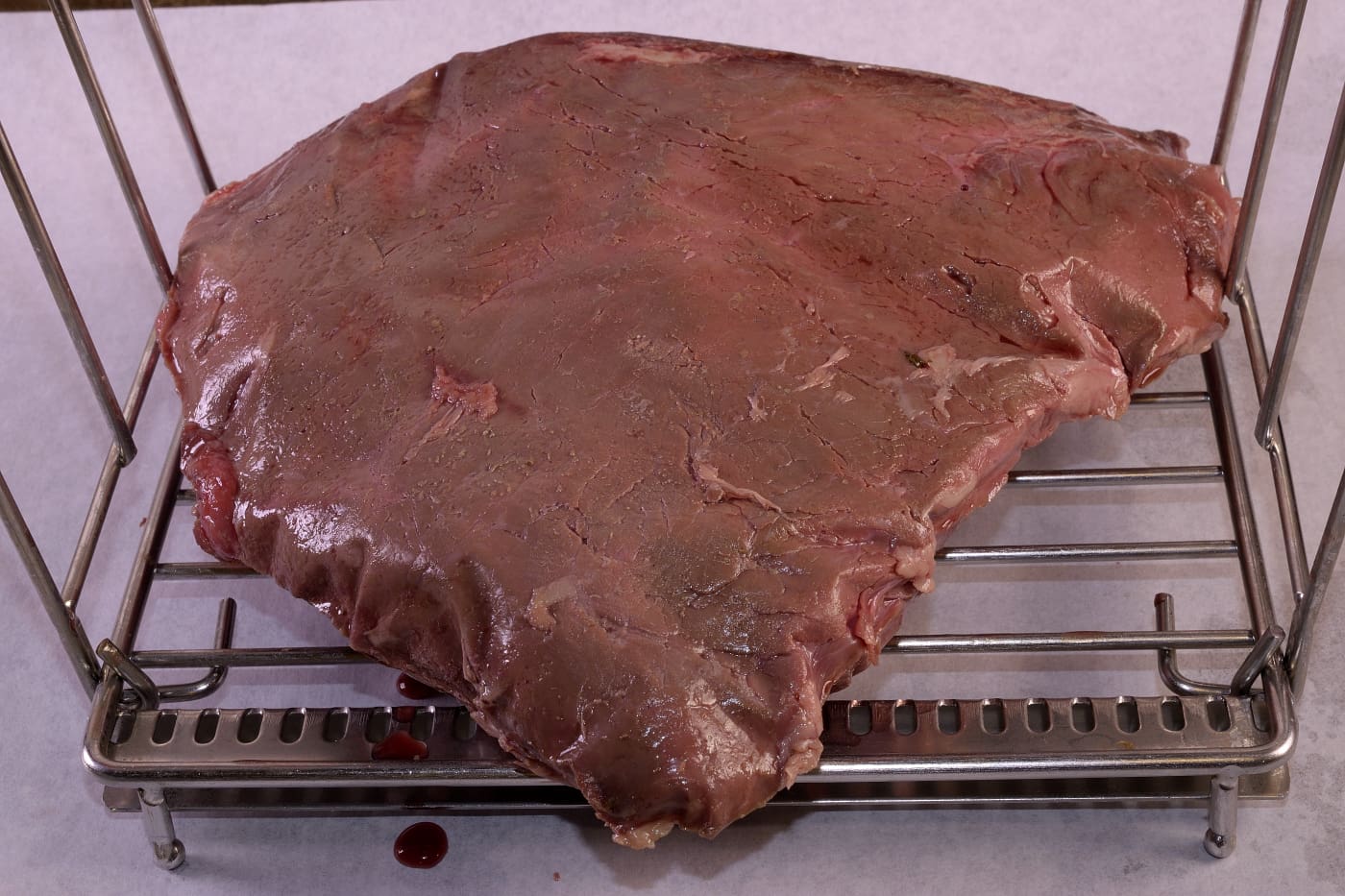
Remove the roast from the package–be sure to reserve the juices. Pat the roast dry and place on a heat proof rack. We used a Lipavi L10. These stainless steel racks were custom designed for sous vide processing but are great for multiple purposes– they are water proof, rust proof, dishwasher proof and smoker/oven proof.
Next, we want to create an adhesive surface for the benefit of creating a well seasoned crust.
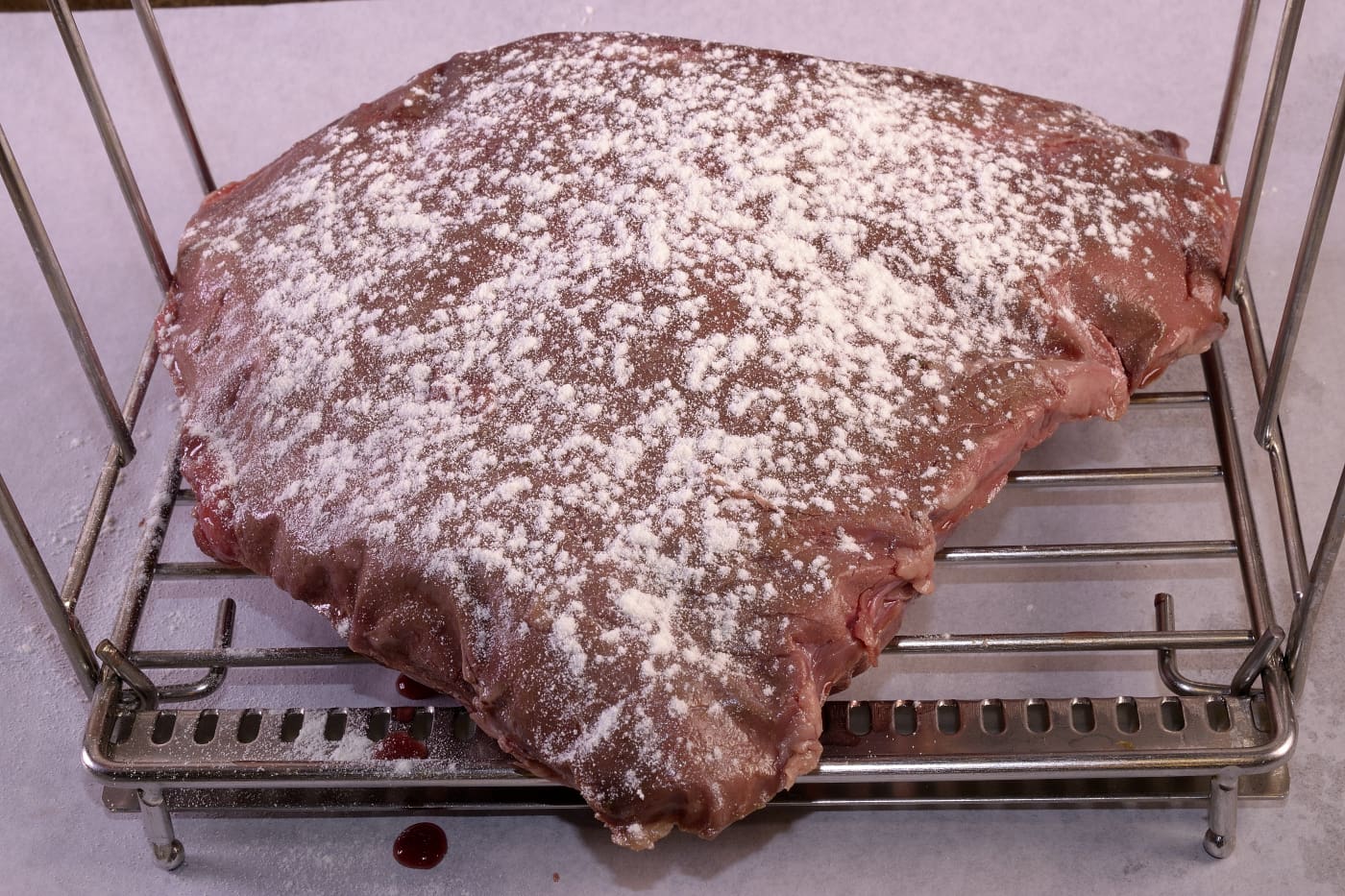
Use a dredge/shaker to sprinkle the surface with powdered egg whites. A fresh egg white beaten with an equal amount of water will achieve the same result.
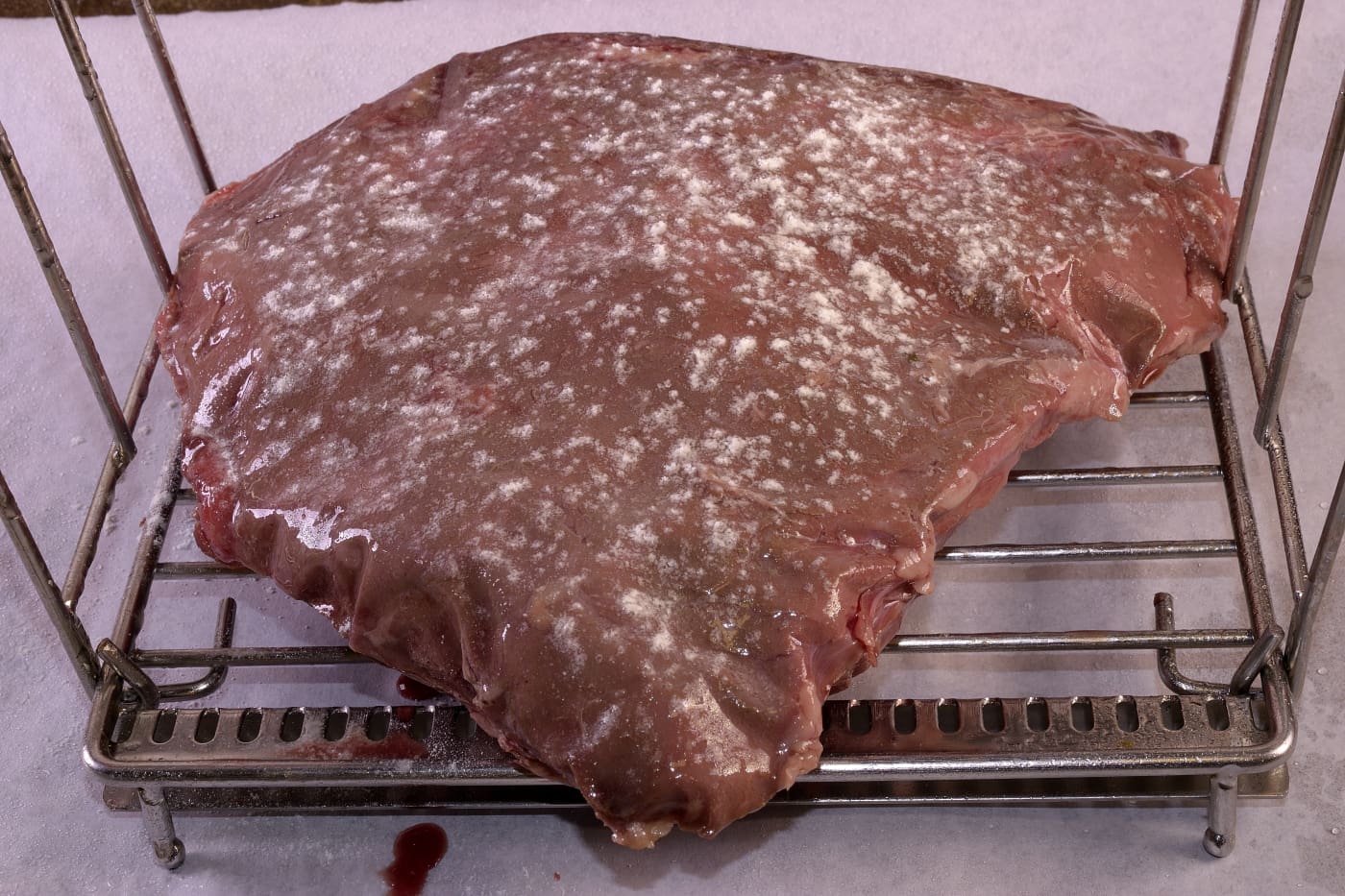
Use a spray bottle filled with water to dissolve the powdered egg white–skip this step if you are using fresh egg white.
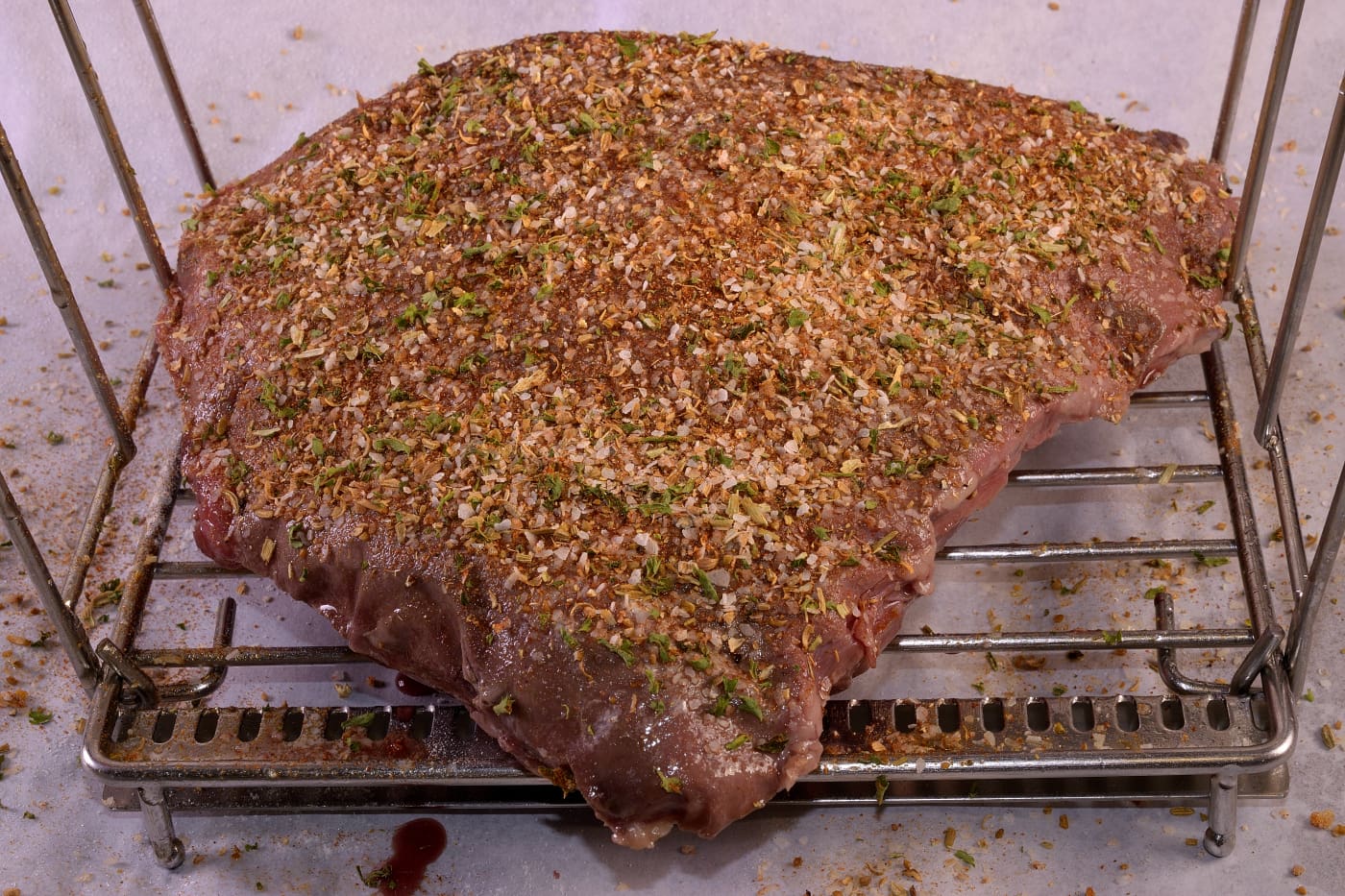
Sprinkle with your choice of seasonings. We used our recipe for Grindhouse Seasoning.

Mist with spray release or drizzle with oil.

Turn the roast over onto a rack with the unseasoned side up.
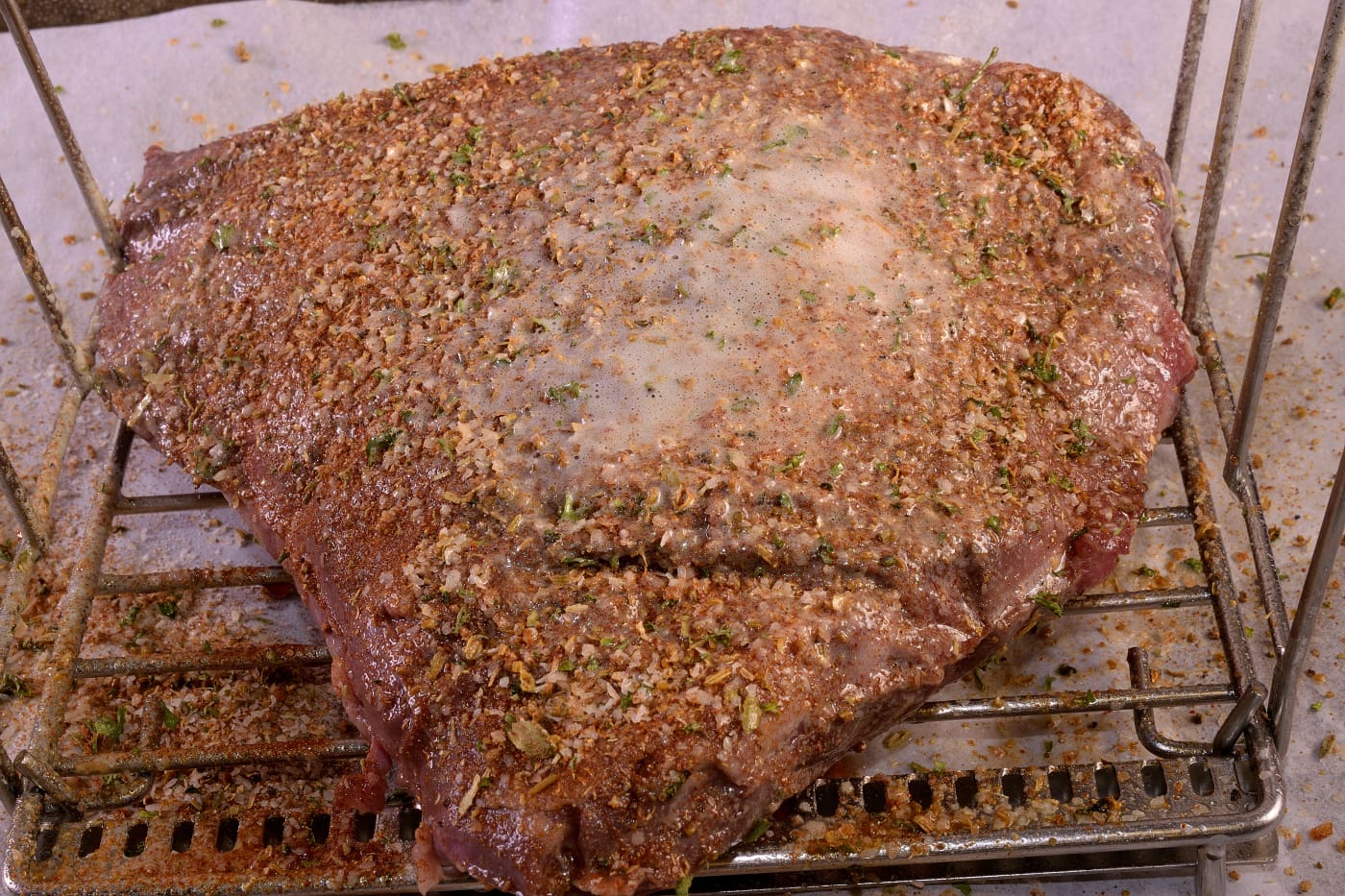
Repeat the seasoning process. Spray with oil again–this prevents the herbs in the seasoning from scorching. Set aside to give the coating a few minutes to attach itself. We have a wide assortment of easy to make rub/seasonings linked HERE. Lipavi #3 with a little extra sugar is also a good choice.
Juices

Clarify the bag juices according to the method explained HERE. Add a pinch of your seasoning mix and either keep warm or refrigerate to be reheated at service.
Where there’s smoke, there’s BBQ
Set your smoker between 180 F/80 C and 225 F/107 C. We use a PID driven pellet grill, but any back yard smoker will suffice. The lower the temperature utilized, the more smoke flavor will be realized.
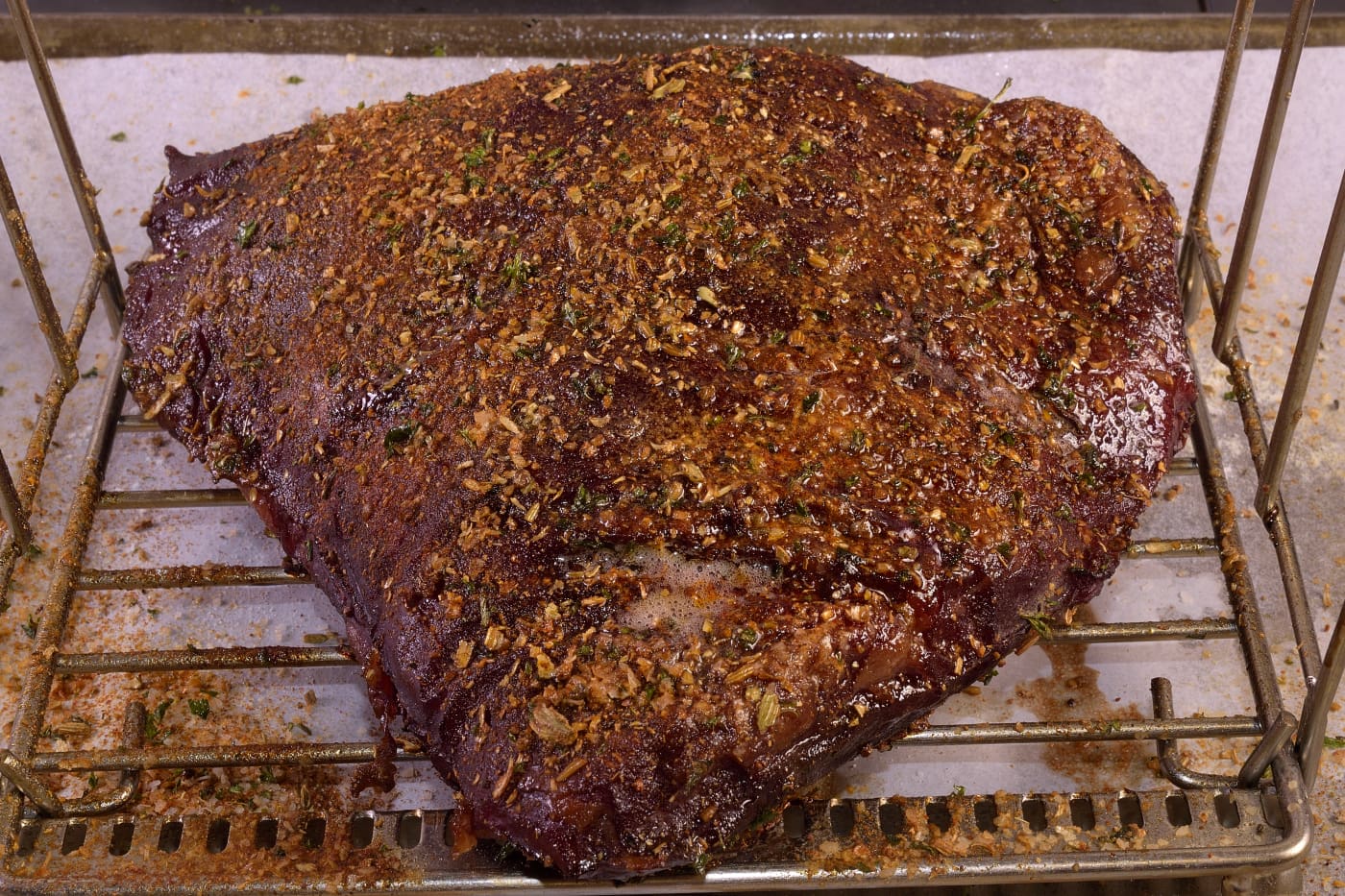
Once the desired appearance is achieved, remove the rack from the smoker. Internal temperature should be at least 125F/52C. Properly executed sous vide processing guarantees tenderness. Isn’t it great to know in advance?
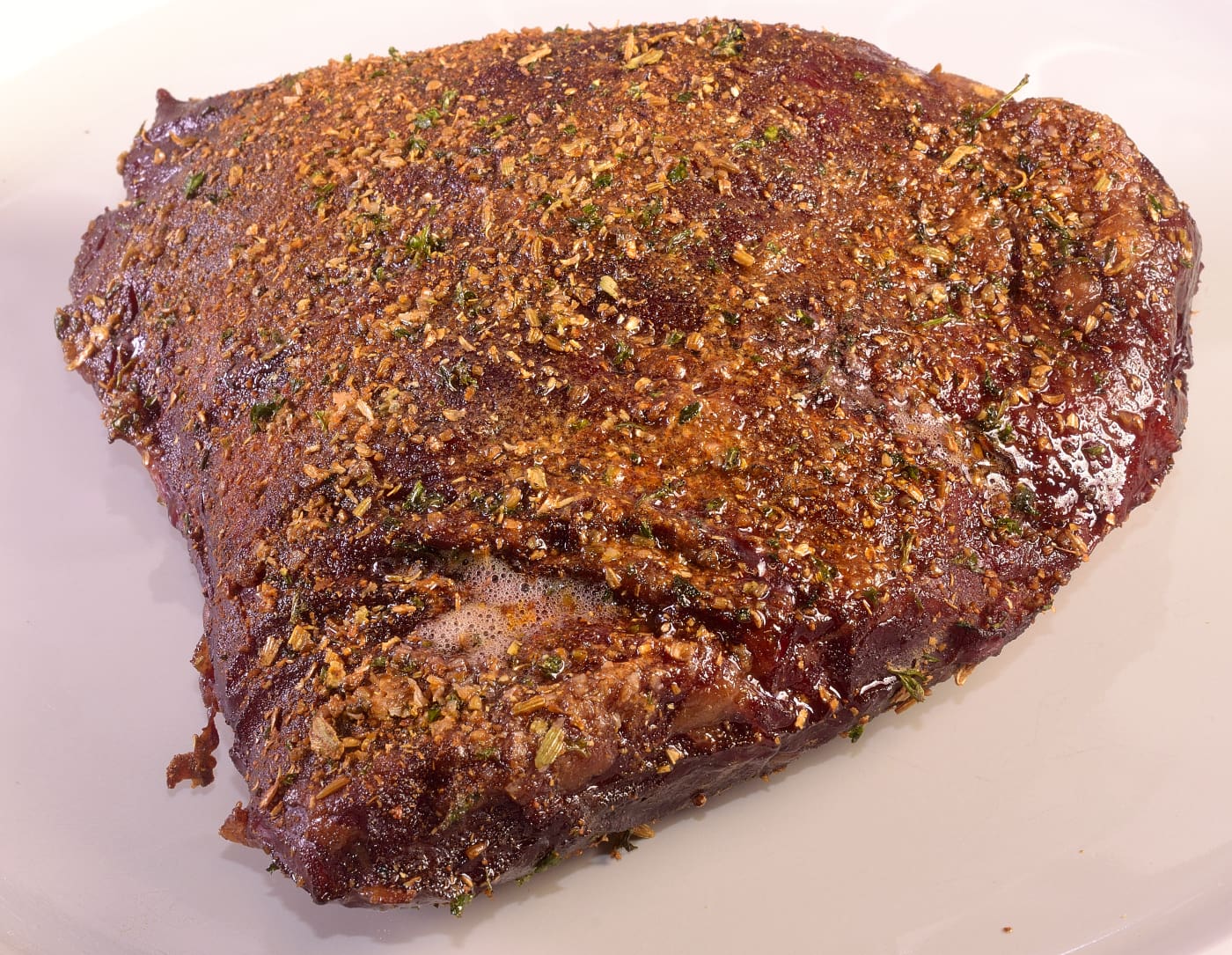
Transfer to a clean work surface.

Slice on the bias “London Broil” style.

As the methodology promises, the appearance of doneness is uniform throughout the whole roast. The crust endures!

Simplicity reigns supreme–drizzle the clarified juices and sprinkle with a little fresh chopped parsley or even mint; almost “Chimichurri style.”

Just for the fun of it, we used a 10mm melon baller to cut carrot and potato spheres. Just slightly larger than a pea. Asparagus spears blanched with boiling water, chilled, split and cast iron grilled.
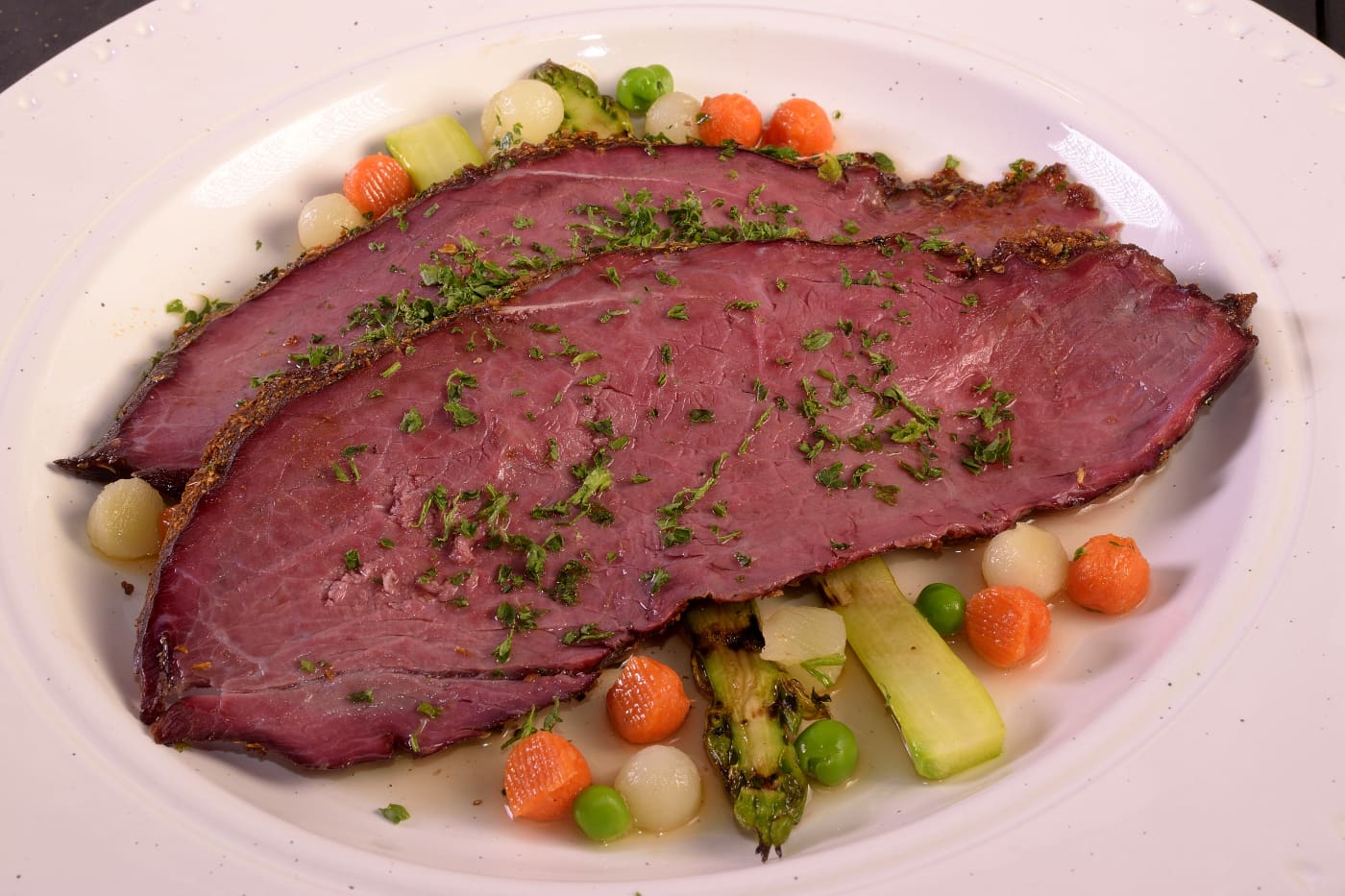
A heartier portion.
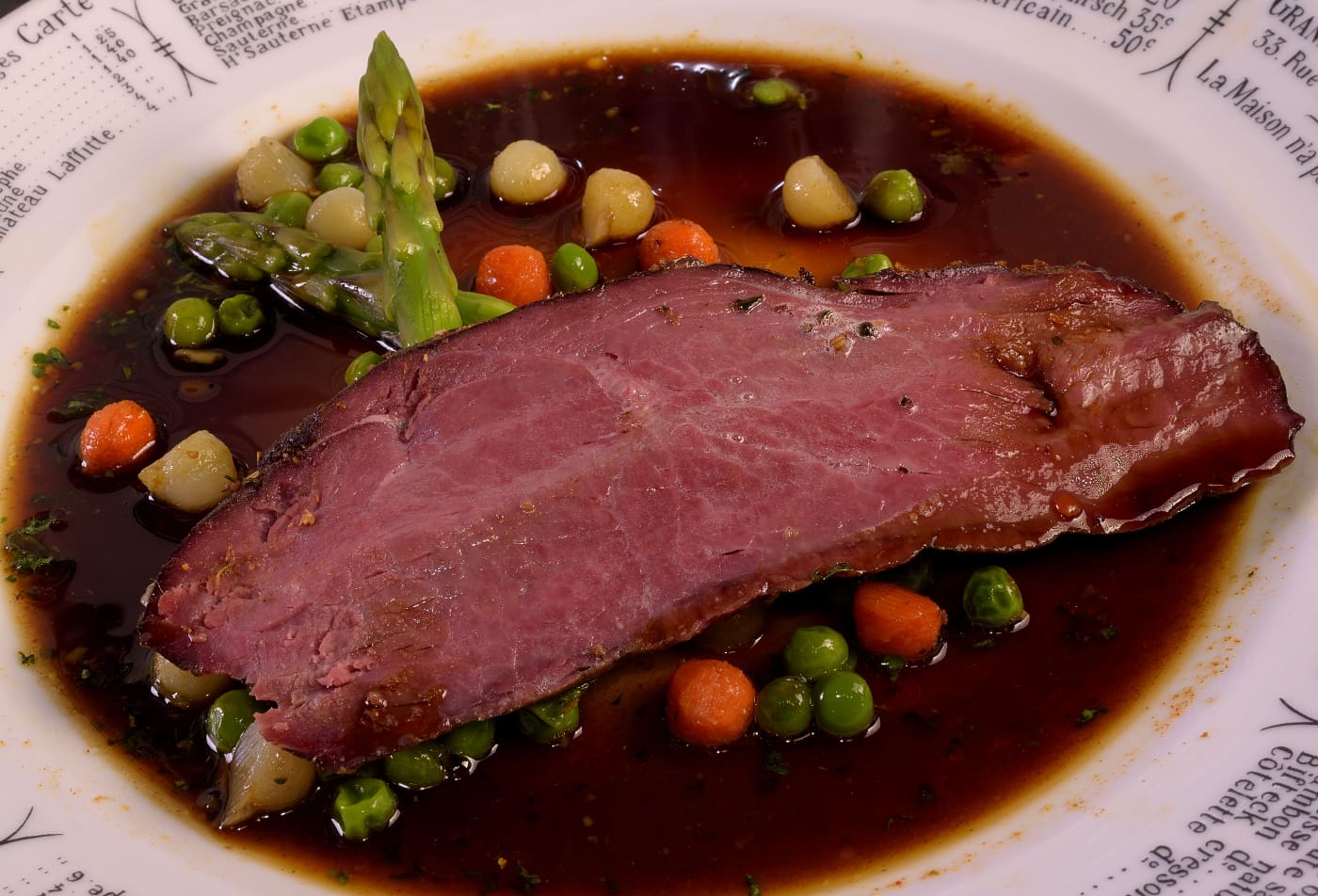
We added a little glace de viande added to the juices (optional).
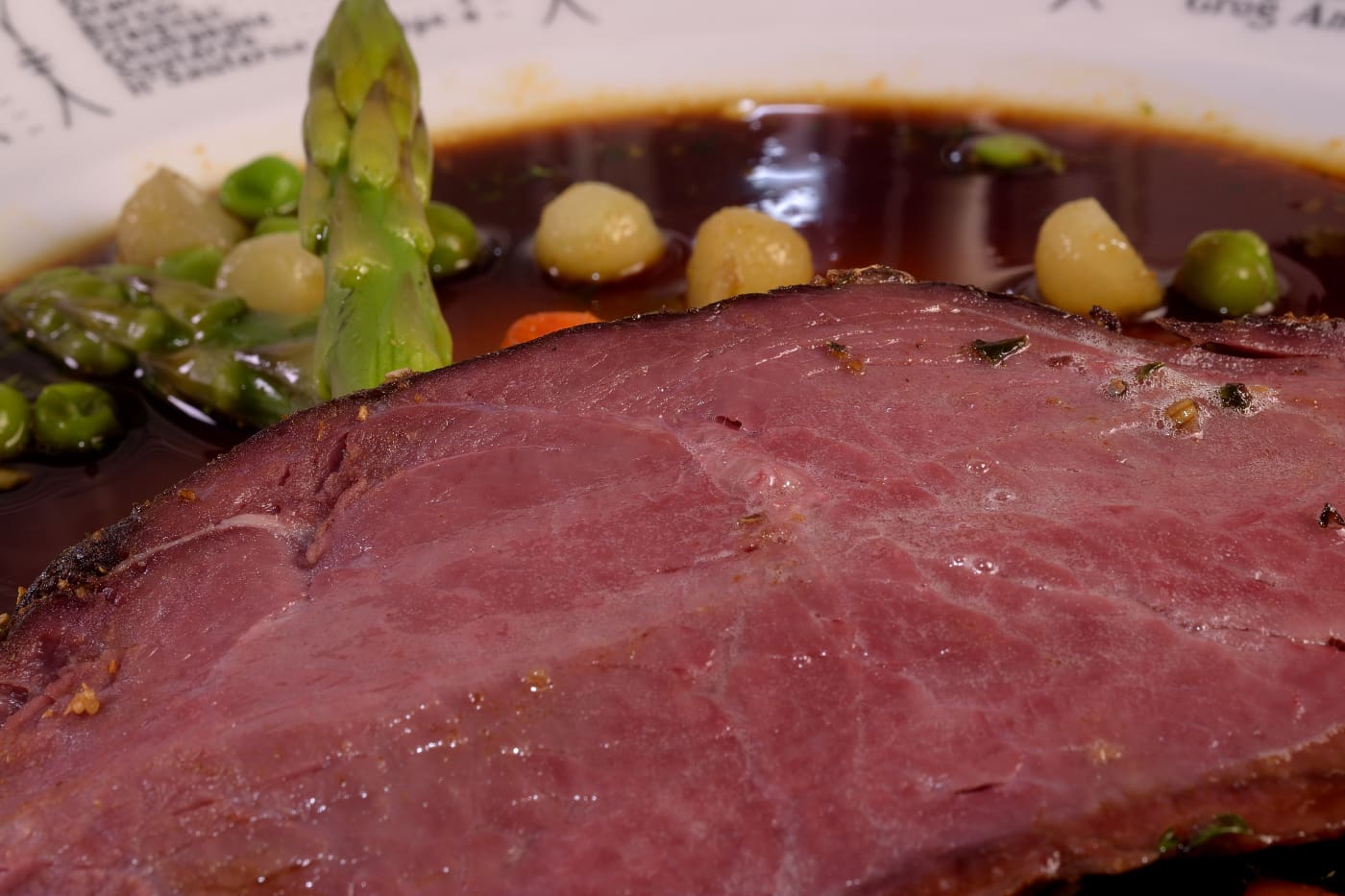
Norm
Visit us on Facebook at SVR–Sous Vide Resources; Low Temperature Pasteurization, Sous-B-Q™, | Facebook
The day after…
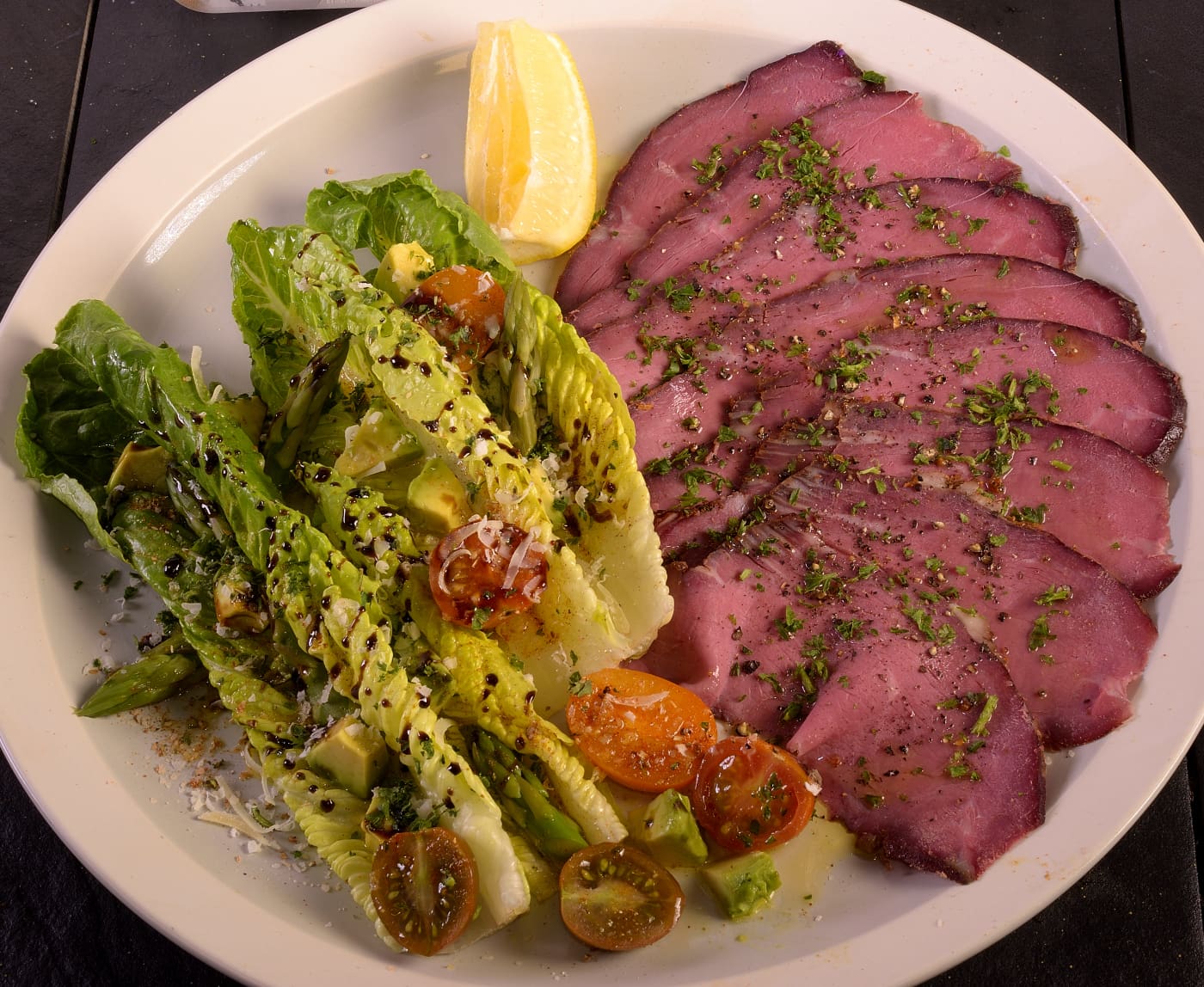
In the unlikely event that there are “leftovers,” this item can be utilized to create a vibrant, smoky “cold platter.”

